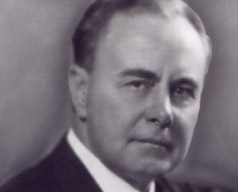
|
FABIANA
BIASINI, Piano
Critically acclaimed for
her "immediate, fresh musicality and superior technical ability" Fabiana
Biasini made her North American debut at the Spoleto Festival in Charleston,
where she was hailed as "a major talent with exceptional strength and power".
Since then, she has performed
in many leading venues in the United States, Europe, Latin America, and
the Far East.
Her concerto performances
include collaborations with orchestras such as the Bolshoy Opera Minsk
Orchestra, the Santa Cecilia Orchestra, the Budapest Symphony Orchestra,
the Kiev State Symphony Orchestra, the Miskolc Symphony Orchestra, the
Orchestra Sinfonica di Roma e del Lazio, among others. Some of her festival
performances include the Gilmore International Keyboard Festival - USA,
the Festival Pro Mondo Uno - Italy, the Festival do Teatro Amazonas - Brazil,
the Settimane Musicali Senesi - Italy, the International Brahms Festival
- Switzerland.
Fabiana plays a comprehensive
repertoire, maintaining a balance between standard concert masterpieces
and works she feels are deserving of a wider popularity. Particular areas
of interest include music from the late 19th and early 20th century, and
the stylistic variety of contemporary music. As a result, her carefully
crafted programs have been defined as “adventurous and unique”. She is
extremely active as a chamber musician as well, and plays regularly with
renowned artists.
In 2005 she has completed
the performance of the entire chamber music works for piano and strings
by Johannes Brahms.
In 2001 she was the first
woman to perform an official recital in Teheran since the 1979 revolution,
marking a new era in the cultural relations between Iran and Western Countries.
In October 2005 she was chosen to perform for the celebrations of the 60th
anniversary of FAO of the United Nations.
Fabiana Biasini began her
musical studies at the age of five in her native Italy.
She graduated with the highest
honours from the Santa Cecilia Academy in Rome, where she studied with
Carla Giudici, and was awarded the coveted biennial prize for outstanding
musicianship. She pursued further studies in chamber music at the Accademia
Chigiana, where she was awarded the Chigi-Saracini Award for “great artistry
and mastery of phrasing". Later on, she travelled to New York City to continue
her studies at the Manhattan School of Music, with Byron Janis and Miyoko
Lotto. Also, she worked closely with eminent pianists such as Nikita Magaloff,
Dimitri Bashkirov, Alexis Weissenberg.
She has been a featured
artist on radio and television in the United States, Latin America, Germany,
France, Spain and Italy. Since 2004 she is also Pianist-in-residence for
the Rome Symphony Orchestra (Orchestra Filarmonica di Roma e del Lazio). |

